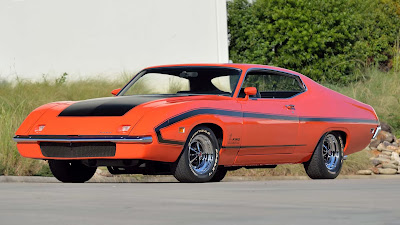Final Edition - Ferrari has a storied legacy in the automotive world, often synonymous with speed, luxury, and exclusivity. One of the highlights in Ferrari’s illustrious history is the 612 Scaglietti, which stands out not only for its performance but also for being the last Ferrari model to feature a manual transmission.
 |
| The Ferrari 612 Scaglietti, named after the renowned coachbuilder Sergio Scaglietti, is a 2+2 executive grand tourer coupé introduced in 2004. (Picture from: PistinHeads) |
 |
| The Ferrari 612 Scaglietti stands out not only for its performance but also for being the last Ferrari model to feature a manual transmission. (Picture from: PistinHeads) |
 |
| The Ferrari 612 Scaglietti's design and performance were ahead of their time, featuring an automatic transmission styled like an F1 car with paddle shifters. (Picture from: OtomotifOkeZone) |
This rarity adds to the allure of the 612 Scaglietti with a manual transmission. The limited production run means that each unit is a collector’s dream, often fetching high prices in the resale market. At one point, a Ferrari 612 Scaglietti with a manual transmission was sold for as low as $92,000, a testament to its value and desirability among enthusiasts.
 |
| The 6-speed manual transmission further enhances the driving dynamics, offering a connection between the driver and the car that automatic transmissions simply cannot replicate. (Picture from: OtomotifOkeZone) |
Under the hood, the Ferrari 612 Scaglietti boasts a formidable V12 engine with a displacement of 5,748 cc. This powerhouse engine delivers an impressive 533 horsepower and 588 Nm of torque, ensuring a thrilling driving experience. The car's performance figures are equally remarkable, with a 0-100 km/h acceleration time of just 4 seconds and a top speed of 320 km/h. The 6-speed manual transmission further enhances the driving dynamics, offering a connection between the driver and the car that automatic transmissions simply cannot replicate.
 |
| The Ferrari 612 Scaglietti boasts a formidable V12 engine with a displacement of 5,748 cc, with a 0-100 km/h acceleration time of just 4 seconds and a top speed of 320 km/h. (Picture from: PistinHeads) |
Over the years, the automotive industry has seen a significant shift towards automatic transmissions, driven by consumer preferences for convenience and advancements in technology. Ferrari, adapting to this trend, gradually phased out manual transmissions from its lineup. As a result, the 612 Scaglietti with a manual transmission has become a sought-after collector’s item, with its rarity and historical significance driving up its market value.
 |
| The Ferrari 612 Scaglietti with a manual transmission has become a sought-after collector’s item, with its rarity and historical significance driving up its market value. (Picture from: PistinHeads) |
Ferrari’s decision to end the production of manual transmissions marked a significant shift in the automotive landscape. However, the legacy of the 612 Scaglietti lives on, cherished by collectors and automotive aficionados alike. Its blend of power, elegance, and exclusivity ensures that it remains a standout model in Ferrari’s prestigious lineup.
 In a world where technology and automation are becoming the norm, the Ferrari 612 Scaglietti serves as a reminder of the pure, unadulterated driving pleasure that comes from a manual transmission. It represents a bygone era where driving was as much about skill and engagement as it was about speed and performance. For those fortunate enough to own one, the 612 Scaglietti is not just a car; it’s a piece of Ferrari's rich heritage and a testament to the enduring appeal of manual driving in an increasingly automated world. *** [EKA | FROM VARIOUS SOURCES | FERRARI | BRINGATRAILER | PISTONHEADS | WIKIPEDIA ]
In a world where technology and automation are becoming the norm, the Ferrari 612 Scaglietti serves as a reminder of the pure, unadulterated driving pleasure that comes from a manual transmission. It represents a bygone era where driving was as much about skill and engagement as it was about speed and performance. For those fortunate enough to own one, the 612 Scaglietti is not just a car; it’s a piece of Ferrari's rich heritage and a testament to the enduring appeal of manual driving in an increasingly automated world. *** [EKA | FROM VARIOUS SOURCES | FERRARI | BRINGATRAILER | PISTONHEADS | WIKIPEDIA ]Note: This blog can be accessed via your smart phone

































